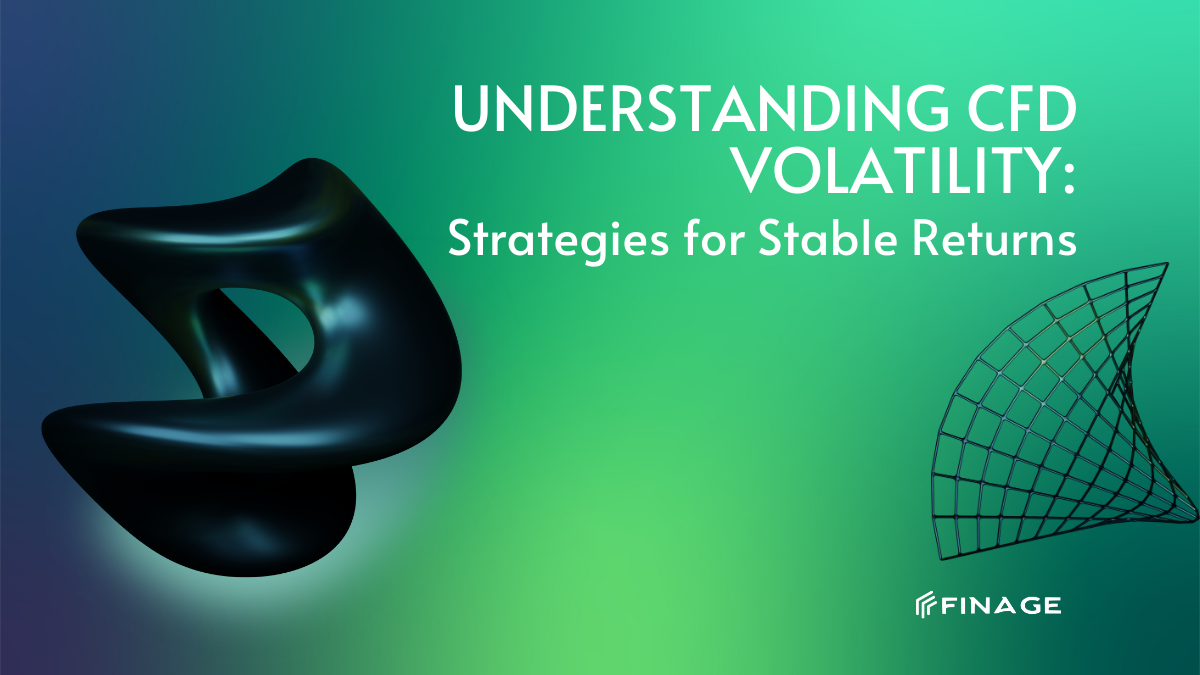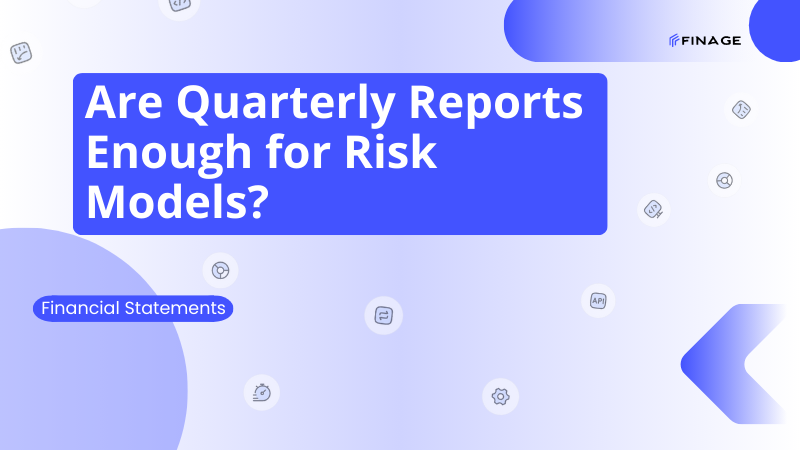Understanding CFD Volatility: Strategies for Stable Returns
7 min read • August 8, 2024

Introduction
Contracts for Difference (CFDs) offer traders the opportunity to profit from price movements in various financial instruments without owning the underlying asset. While CFDs can be lucrative, they are also associated with significant volatility, which can pose challenges for achieving stable returns. This blog post explores the nature of CFD volatility, the factors contributing to it, and effective strategies for managing risk and achieving consistent profits.
Contents
- Understanding CFD Volatility
- What are CFDs?
- The Nature of CFD Volatility
- Factors Influencing CFD Volatility
- Strategies for Managing CFD Volatility
- Risk Management Techniques
- Technical Analysis
- Diversification
- Leverage Management
- Advanced Trading Strategies
- Hedging Strategies
- Scalping Strategies
- Trend Following Strategies
- Practical Tips for Stable Returns
- Setting Realistic Goals
- Continuous Learning
- Monitoring Market Conditions
- Final Thoughts
Understanding CFD Volatility
What are CFDs?
Contracts for Difference (CFDs) are financial derivatives that allow traders to speculate on the price movements of various underlying assets, such as stocks, commodities, indices, and currencies. When trading CFDs, the trader agrees to exchange the difference in the price of the underlying asset from the time the contract is opened to the time it is closed.
Leverage: CFDs typically offer leverage, allowing traders to control larger positions with a smaller amount of capital. While leverage can amplify profits, it also increases the potential for losses.
Flexibility: CFDs provide flexibility, enabling traders to go long (buy) or short (sell) on an asset, profiting from both rising and falling markets.
The Nature of CFD Volatility
Volatility refers to the degree of variation in the price of a financial instrument over time. In the context of CFDs, volatility can significantly impact trading outcomes, presenting both opportunities and risks.
High Volatility: High volatility in CFD markets can lead to rapid price movements, creating potential for substantial profits. However, it also increases the risk of significant losses, especially for leveraged positions.
Market Sensitivity: CFD prices are sensitive to a variety of factors, including economic data releases, geopolitical events, and market sentiment. These factors can cause sudden and unpredictable price swings.
Factors Influencing CFD Volatility
Several factors contribute to the volatility of CFDs:
Economic Indicators: Data releases such as GDP growth, employment figures, and inflation rates can impact market sentiment and cause volatility in CFD prices.
Geopolitical Events: Political events, such as elections, conflicts, and policy changes, can create uncertainty and drive market fluctuations.
Market Sentiment: Investor sentiment, influenced by news, rumors, and market trends, can lead to rapid buying or selling, increasing volatility.
Liquidity: The liquidity of the underlying asset affects CFD volatility. Less liquid assets tend to be more volatile, as fewer market participants can lead to larger price swings.
Strategies for Managing CFD Volatility
Risk Management Techniques
Effective risk management is crucial for navigating CFD volatility and achieving stable returns:
Stop-Loss Orders: Use stop-loss orders to limit potential losses. A stop-loss order automatically closes a position when the price reaches a predetermined level, protecting your capital from significant declines.
Position Sizing: Determine the appropriate position size based on your risk tolerance and account balance. Avoid over-leveraging, which can amplify losses in volatile markets.
Risk-Reward Ratio: Establish a favorable risk-reward ratio for each trade. This ratio compares the potential profit of a trade to its potential loss. Aim for a ratio of at least 1:2 to ensure that profitable trades outweigh losing trades.
Technical Analysis
Technical analysis involves using historical price data and technical indicators to predict future price movements. This approach can help identify potential entry and exit points in volatile markets.
Moving Averages: Moving averages smooth out price data to identify trends. Common types include the simple moving average (SMA) and exponential moving average (EMA). Crossovers and divergence from price help generate trading signals.
Relative Strength Index (RSI): RSI measures the speed and change of price movements, indicating overbought or oversold conditions. An RSI above 70 suggests overbought conditions, while an RSI below 30 indicates oversold conditions.
Bollinger Bands: Bollinger Bands consist of a moving average and two standard deviation lines. They help identify volatility and potential reversal points. Prices moving outside the bands may indicate overbought or oversold conditions.
Diversification
Diversification involves spreading investments across different assets to reduce risk exposure. This strategy helps manage risk and enhance returns.
Asset Allocation: Diversify your CFD portfolio across various asset classes, such as stocks, commodities, indices, and currencies. This reduces the impact of adverse movements in any single asset.
Geographic Diversification: Invest in CFDs from different geographic regions to reduce exposure to regional risks. This strategy captures growth opportunities in various markets.
Leverage Management
Managing leverage effectively is crucial for mitigating the risks associated with CFD trading.
Low Leverage: Use lower leverage ratios to reduce the impact of market volatility on your trades. While leverage can amplify profits, it also increases the potential for significant losses.
Margin Requirements: Monitor margin requirements to ensure that you have sufficient funds to maintain your positions. Avoid over-leveraging, which can lead to margin calls and forced liquidation of positions.
Advanced Trading Strategies
Hedging Strategies
Hedging strategies involve using financial instruments to offset potential losses in CFD trading. These strategies help protect against adverse market movements.
Currency Pairs: Hedging can involve trading currency pairs that are inversely correlated. By holding positions in both pairs, traders can offset losses in one with gains in the other.
Options: Options provide the right to buy or sell an asset at a predetermined price. Traders can use options to hedge against potential losses in their CFD positions.
Scalping Strategies
Scalping involves making numerous small trades to capture tiny price movements. This strategy requires high-speed execution and tight spreads.
High-Frequency Scalping: Algorithms execute a large number of trades within seconds or minutes, aiming to profit from small price fluctuations.
Market Making: This strategy involves placing buy and sell orders simultaneously to profit from the bid-ask spread. Algorithms continuously adjust orders based on market conditions.
Trend Following Strategies
Trend-following strategies aim to capitalize on sustained movements in CFD prices. Algorithms identify trends using technical indicators such as moving averages, trend lines, and momentum indicators.
Moving Average Crossovers: This strategy involves buying or selling when short-term moving averages cross long-term moving averages, indicating a change in trend direction.
Breakout Strategies: Algorithms monitor key support and resistance levels, entering trades when prices break out of these levels, signaling the start of a new trend.
Practical Tips for Stable Returns
Setting Realistic Goals
Setting realistic and achievable trading goals is crucial for long-term success:
Profit Targets: Define clear profit targets for each trade and overall portfolio. Avoid setting unrealistic expectations that can lead to excessive risk-taking.
Risk Limits: Establish risk limits for individual trades and your overall portfolio. Stick to these limits to protect your capital and manage risk effectively.
Continuous Learning
Continuous learning and staying updated with market developments are essential for successful CFD trading:
Market Analysis: Regularly analyze market trends, news, and economic indicators. This helps you stay informed about potential opportunities and risks.
Education: Invest in your education by attending trading courses, webinars, and reading books on CFD trading and technical analysis.
Monitoring Market Conditions
Regularly monitoring market conditions can help you make informed trading decisions:
Economic Calendar: Keep track of important economic events and data releases that can impact CFD markets. Use this information to anticipate potential volatility and adjust your trading strategy accordingly.
Technical Indicators: Continuously monitor technical indicators and price patterns to identify potential entry and exit points. Use real-time data to make timely and informed decisions.
Final Thoughts
CFD trading offers significant profit potential but comes with inherent volatility and risk. Understanding the factors influencing CFD volatility and implementing effective risk management strategies are crucial for achieving stable returns. By leveraging technical analysis, diversifying your portfolio, and managing leverage wisely, you can navigate the complexities of CFD trading and enhance your chances of success.
Advanced trading strategies, such as hedging, scalping, and trend following, can further improve your trading performance. Setting realistic goals, continuously learning, and staying updated with market conditions are essential practices for long-term success in CFD trading.
As the financial markets continue to evolve, staying informed and adaptable will be key to capitalizing on new opportunities and achieving consistent profits in CFD trading. By mastering these strategies and maintaining a disciplined approach, you can effectively manage CFD volatility and achieve stable returns.
You can get your CFDs Indices Market Data with an Index API key.
Build with us today!
Claim Your Free API Key Today
Access stock, forex and crypto market data with a free API key—no credit card required.

Stay Informed, Stay Ahead
Finage Blog: Data-Driven Insights & Ideas
Discover company news, announcements, updates, guides and more


